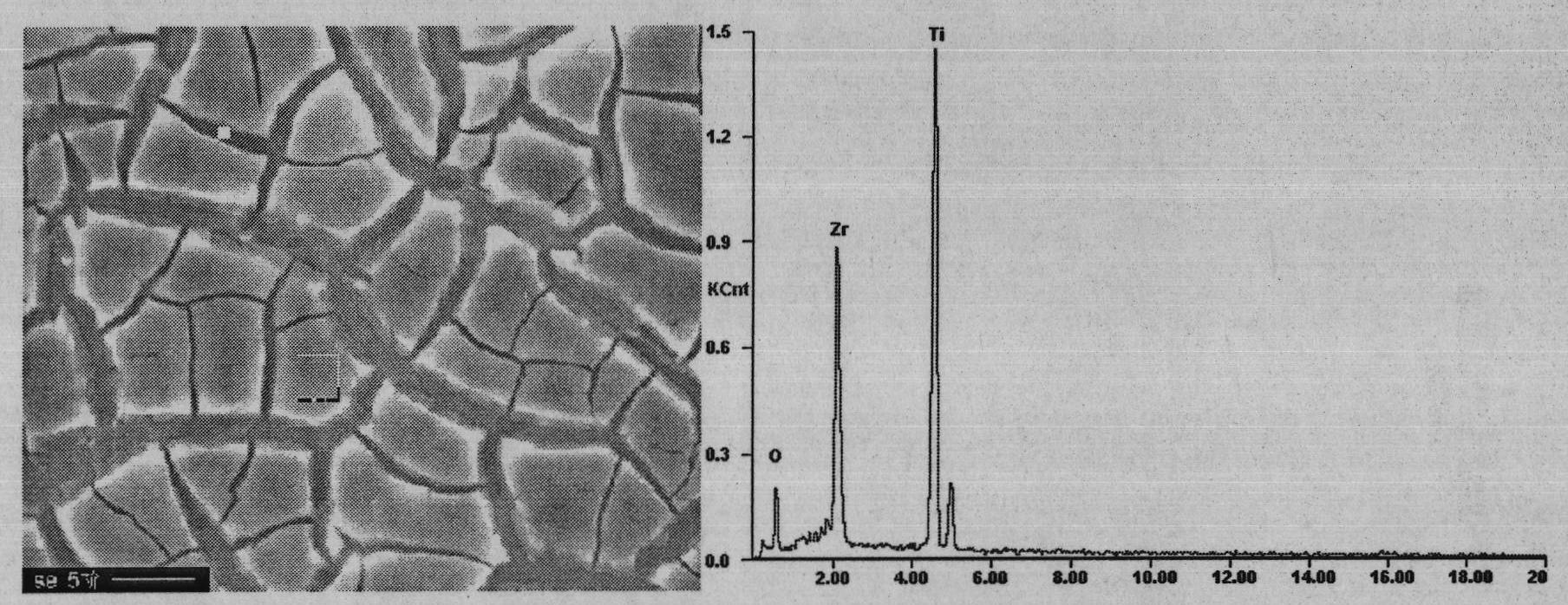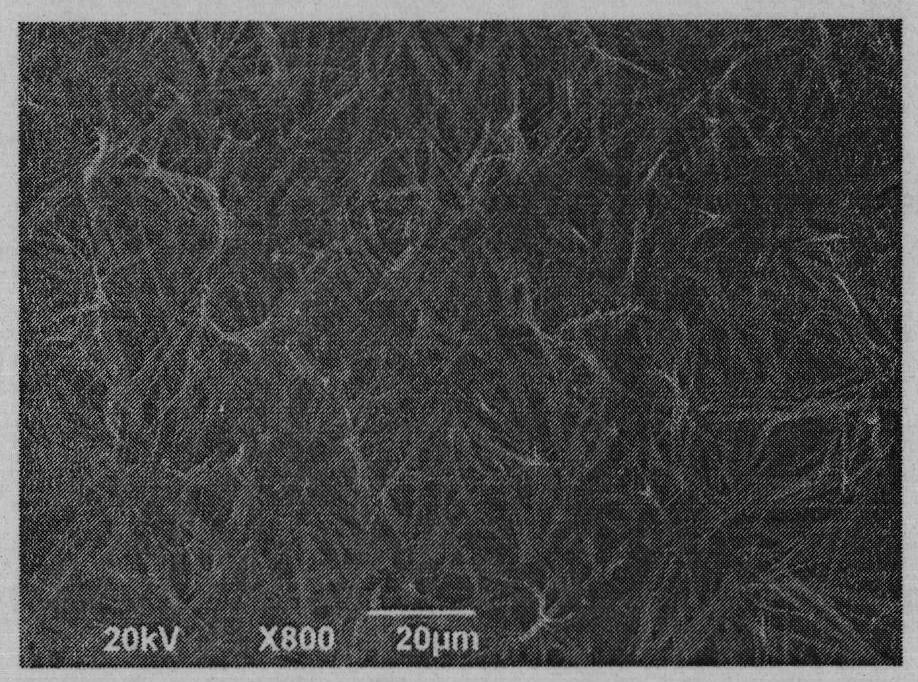Electrochemical method for preparing HA/ZrO2 (hydroxylapatite/zirconia) gradient coating on surface of medical titanium
A hydroxyapatite and gradient coating technology, applied in the direction of coating, electrolysis process, electrolysis components, etc., can solve the problems of affecting the mechanical properties of the coating, poor coating dispersion, agglomeration of component particles, etc. Corrosion resistance and biocompatibility, mitigation of thermal expansion coefficient mismatch, uniform and dense coating effect
- Summary
- Abstract
- Description
- Claims
- Application Information
AI Technical Summary
Problems solved by technology
Method used
Image
Examples
Embodiment 1
[0026] (1) Wire-cut medical pure titanium into 1×1×0.1cm titanium sheets; grind the titanium sheets with sandpaper until the surface is smooth without machining traces; use absolute ethanol, acetone, and deionized water to mix Ultrasonic cleaning, the time is 8min; then use HF:HNO 3 :H 2 O=1:1:8 acid solution for acid etching; finally use deionized water and ultrasonic cleaning for 8 minutes. Put the sample into the sample bag with tweezers, ready for experiment.
[0027] (2) The Ti sheet was used as the cathode working electrode, the platinum electrode was used as the counter electrode, and saturated calomel was used as the reference electrode, and the distance between the electrodes was 3 cm.
[0028] (3) Weigh 0.5781g of anhydrous zirconyl nitrate, dissolve it with 100ml of dilute nitric acid, then set the volume to 200ml, place the beaker on a magnetic stirrer and stir, adjust the pH of the solution to 2.3 with ammonia water, and finally obtain a uniform electrolyte. Th...
Embodiment 2
[0034] (1) Wire-cut medical pure titanium into 1×1×0.1cm titanium sheets; grind the titanium sheets with sandpaper until the surface is smooth without machining traces; use absolute ethanol, acetone, and deionized water to mix Ultrasonic cleaning, the time is 8min; then use HF:HNO 3 :H 2 O=1:1:8 acid solution for acid etching; finally use deionized water and ultrasonic cleaning for 8 minutes. Put the sample into the sample bag with tweezers, ready for experiment.
[0035] (2) The Ti sheet was used as the cathode working electrode, the platinum electrode was used as the counter electrode, and saturated calomel was used as the reference electrode, and the distance between the electrodes was 3 cm.
[0036] (3) Weigh 1.1562 g of anhydrous zirconyl nitrate, dissolve it with 100 ml of dilute nitric acid, then set the volume to 200 ml, place the beaker on a magnetic stirrer and stir, adjust the pH of the solution to 2.3 with ammonia water, and finally obtain a uniform electrolyte. ...
Embodiment 3
[0040] (1) Wire-cut medical pure titanium into 1×1×0.1cm titanium sheets; grind the titanium sheets with sandpaper until the surface is smooth without machining traces; use absolute ethanol, acetone, and deionized water to mix Ultrasonic cleaning, the time is 8min; then use HF:HNO 3 :H 2 O=1:1:8 acid solution for acid etching; finally use deionized water and ultrasonic cleaning for 8 minutes. Put the sample into the sample bag with tweezers, ready for experiment.
[0041] (2) The Ti sheet was used as the cathode working electrode, the platinum electrode was used as the counter electrode, and saturated calomel was used as the reference electrode, and the distance between the electrodes was 3 cm.
[0042] (3) Weigh 1.7343g of anhydrous zirconyl nitrate, dissolve it with 100ml of dilute nitric acid, then set the volume to 200ml, place the beaker on a magnetic stirrer and stir, adjust the pH of the solution to 2.3 with ammonia water, and finally obtain a uniform electrolyte. Th...
PUM
 Login to View More
Login to View More Abstract
Description
Claims
Application Information
 Login to View More
Login to View More - R&D
- Intellectual Property
- Life Sciences
- Materials
- Tech Scout
- Unparalleled Data Quality
- Higher Quality Content
- 60% Fewer Hallucinations
Browse by: Latest US Patents, China's latest patents, Technical Efficacy Thesaurus, Application Domain, Technology Topic, Popular Technical Reports.
© 2025 PatSnap. All rights reserved.Legal|Privacy policy|Modern Slavery Act Transparency Statement|Sitemap|About US| Contact US: help@patsnap.com



